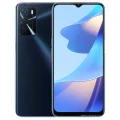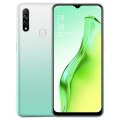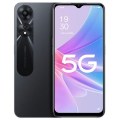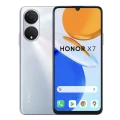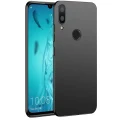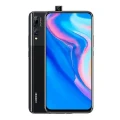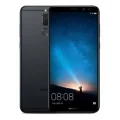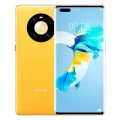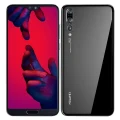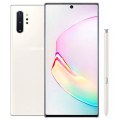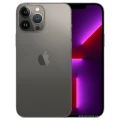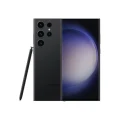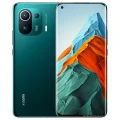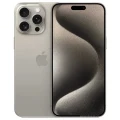- Awesome page
- Latest Mobile
- Smartphones
- Oppo F11 Pro
Oppo F11 Pro
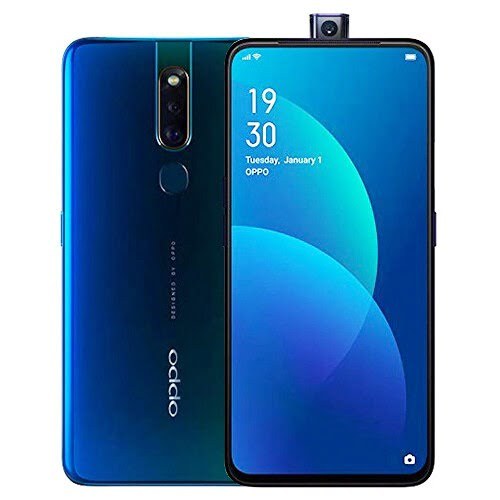


Oppo F11 Pro Price in Bangladesh
The price of Oppo F11 Pro is 36,990 BDT. Oppo F11 Pro smartphone comes with 6.53 inches LTPS IPS LCD capacitive touchscreen display and performing Octa-core 2.1 GHz, MediaTektek Helio P70 processor. It has 4/6 GB of RAM and 64/128 GB internal storage, which can be expanded up 256 GB external storage. This stylish device has a dual 48 MP, 5 MP depth sensor in the back and a 16 MP Motorized camera on the front side. It was powered by a standard 4000 mAh Li-Polymer battery.
Specifications
General
| Model | Oppo F11 Pro |
| Announced | 2019, February |
| Released | 2019, March |
| Status | Available |
| Official price | 6GB 64GB ৳36,990 |
Design
| Dimensions | 161.3 x 76.1 x 8.8 mm (6.35 x 3.00 x 0.35 in) |
| Weight | 190 g (6.70 oz) |
| Colors |
Thunder Black, Aurora Green |
Network
| Technology | GSM / HSPA / LTE |
| 2G Network |
GSM 850 / 900 / 1800 / 1900 - SIM 1 & SIM 2 |
| 3G Network |
HSDPA 850 / 900 / 2100 |
| 4G Network |
LTE band 1(2100), 3(1800), 5(850), 7(2600), 8(900), 20(800), 28(700), 38(2600), 40(2300), 41(2500) - V1 LTE band 1(2100), 3(1800), 5(850), 7(2600), 8(900), 38(2600), 40(2300), 41(2500) - V2 |
| GPRS <strong>GPRS</strong> (General Packet Radio Service) is a packet oriented mobile data service on the 2G and 3G cellular communication system's global system for mobile communications (GSM), Generally, GPRS is used for the purpose of wireless data transfer, such as sharing pictures and videos or browsing the Internet via a mobile phone connection. | |
| EDGE <strong>EDGE</strong> (Enhanced Data GSM Environment) is a wireless network technology generally considered the next step in the 2G network offers data transfer rates up to four times faster than ordinary GSM networks, Generally, EDGE is used for the purpose of wireless data transfer, such as sharing pictures and videos or browsing the Internet via a mobile phone connection. | |
| Speed | HSPA 42.2/5.76 Mbps, LTE-A (2CA) Cat7 300/50 Mbps |
Display
| Display Type <strong>Display Technology => </strong> A number of display technologies and types used in mobile phones => TFT (Thin Film Transistor), IPS (In-Place Switching), OLED (Organic Light Emitting Diode), AMOLED (Active-Matrix Organic Light-Emitting Diode), Super AMOLED (an even advanced version of AMOLED), Resistive Touchscreen (Resistive touchscreens contain two layer of conductive material with a very small gap between them which acts as a resistance), Capacitive Touchsceen (Capacitive touchscreen technology consists of a layer of glass coated with a transparent conductor) | LTPS IPS LCD capacitive touchscreen, 16M colors |
| Size | 6.53 inches, 103.6 cm2 (~84.4% screen-to-body ratio) |
| Resolution | 1080 x 2340 pixels, 19.5:9 ratio (~397 ppi density) |
Camera
Main camera
| Camera Setup | Dual |
| Primary <strong>Camera</strong> is able to capture photographs and usually videos, The most important characteristics of a camera are the resolution (measured in megapixels), lens focus type (fixed or automatic), higher megapixel cameras are known to capture higher quality photos, but not always a good measurement of the photos quality. |
48 MP, f/1.8, 1/2&quot;, 0.8µm, PDAF 5 MP, f/2.4, 1/5&quot;, 1.12µm, depth sensor |
| Features |
LED flash, HDR, panorama |
| Video | 1080p@30fps |
Selfie camera
| Camera Setup | Single |
| Primary <strong>Camera</strong> is able to capture photographs and usually videos, The most important characteristics of a camera are the resolution (measured in megapixels), lens focus type (fixed or automatic), higher megapixel cameras are known to capture higher quality photos, but not always a good measurement of the photos quality. |
Motorized pop-up 16 MP, f/2.0, 1/3.1&quot;, 1.0µm |
| Features |
HDR |
| Video | 1080p@30fps |
Hardware
| Chipset <strong>Chipset</strong> is a group of integrated circuits designed to perform one or a more dedicated functions, often with real time computing constraints, Popular smartphones are equipped with more advanced embedded chipsets that can do many different tasks depending on their programming. | Mediatek Helio P70 (12nm) |
| CPU <strong>CPU</strong> (Central Processing Unit) mostly known as processors, CPU processes instructions in order to carry out certain functions that make your device operate properly. Processors are often described as the brain of computers, smartphones and tablets, Smartphones and tablets rely on processors to carry out their every task, Processors are an incredibly important factor in selecting any type of computing device, including your smartphone. | Octa-core (4x2.1 GHz Cortex-A73 & 4x2.0 GHz Cortex-A53) |
| GPU <strong>GPU</strong> (Graphics Processing Unit) is a single-chip processor designed to rapidly manipulate and alter memory to accelerate the creation of images in a frame buffer intended for output to a display, This includes things such as lighting effects, object transformations, and 3D motion. | Mali-G72 MP3 |
| RAM (Memory) <strong>RAM</strong> (Random Access Memory) is a type of computer memory that can be accessed randomly, any byte of memory can be accessed without touching the preceding bytes that allows information to be stored and accessed quickly from random locations. RAM is the most common type of memory found in computer systems, smartphones, tablets and other electronic devices. | 6/4 GB |
| Internal Storage <strong>Internal Storage</strong> is a data storage space (flash memory) mostly used in smartphones, tablets and other electronic devices where operating system, apps, music, photos, videos, files and other user data Is stored. | 64/128 GB |
| Sensors <strong>Sensors</strong> are electronic components that detects and responds to some type of input from the physical environment. The specific input could be light, heat, motion, moisture, pressure and location, The output is generally a signal that is converted to use in computing systems, a location sensor, such as a GPS receiver is able to detect current location of your electronic device. |
Fingerprint (rear-mounted), accelerometer, gyro, proximity, compass |
Connectivity
| Bluetooth <strong>Bluetooth</strong> is a wireless communications technology for exchanging data between mobile phones, headsets, computers and other network devices over short distances without wires, Bluetooth technology was primarily designed to support simple wireless networking of personal consumer devices. | 4.2, A2DP, LE |
| Infrared <strong>Infrared</strong> connectivity is an old wireless technology used to connect two electronic devices. It uses a beam of infrared light to transmit information and so requires direct line of sight and operates only at close range. | |
| USB | 2.0, Type-C 1.0 reversible connector, USB On-The-Go |
| GPS <strong>GPS</strong> The Global Positioning System is a satellite-based radio navigation system, GPS permits users to determine their position, velocity and the time 24 hours a day, in all weather, anywhere in the world, In order to locate your position, your device or GPS receiver must have a clear view of the sky. | Yes, with A-GPS, GLONASS, BDS |
| NFC <strong>NFC</strong> (Near field communication) is a set of standards for smartphones and similar devices to establish peer-to-peer radio communications with each other by touching them together or bringing them into proximity, usually no more than a few inches. |
Battery
| Battery Type <strong>Battery Type => </strong> Cell phones run on various kinds of batteries depending on the manufacturer, phone size or shape and features. There are basically four types of cell phone batteries => Lithium Polymer, Lithium Ion, Nickel Metal Hydride and Nickel Cadmium. | Non-Removable Li-Po |
| Capacity <strong>Battery Capacity</strong> is a measure (typically in Amp-hr) of the charge stored by the battery, and is determined by the mass of active material contained in the battery. The battery capacity represents the maximum amount of energy that can be extracted from the battery under certain conditions. | 4000 mAh battery |
| Charging Charging | Fast battery charging VOOC3 |
Oppo F11 Pro Review: Redefining Mid-Range Excellence
With the constant evolution of smartphone technology, choosing the right device can be daunting. Today, we take a closer look at the Oppo F11 Pro, a smartphone that promises to blend high performance with stunning aesthetics. Ideal for tech enthusiasts, avid smartphone users, and photography lovers, this review will help you decide if the Oppo F11 Pro is the phone for you.
Introduction to the Oppo F11 Pro
The Oppo F11 Pro stands out with its impressive specs and sleek design. Featuring a 6.5-inch Full HD+ display, the phone offers vibrant colors and sharp details, making it perfect for multimedia consumption. Powered by a MediaTek Helio P70 processor coupled with 6GB of RAM, the device ensures smooth multitasking and efficient performance. Additionally, the 4,000mAh battery provides long-lasting power, so you can go through your day without constantly reaching for the charger.
One of the key highlights of the Oppo F11 Pro is its pop-up selfie camera, which eliminates the need for a notch and ensures an immersive viewing experience. The rear camera setup includes a 48MP primary sensor and a 5MP depth sensor, promising stunning photography capabilities. With these standout features, the Oppo F11 Pro aims to deliver a premium experience at a mid-range price.
In-Depth Analysis of the Camera Capabilities
The camera capabilities of the Oppo F11 Pro are truly remarkable, particularly in low-light conditions. The 48MP primary sensor captures detailed images with excellent color reproduction, even in challenging lighting scenarios. The Night Mode further enhances low-light photography, allowing you to capture clear and vibrant photos without the need for additional lighting.
AI enhancements play a significant role in the camera’s performance. The AI Scene Recognition feature automatically adjusts the camera settings based on the scene, ensuring optimal results every time. Whether you’re capturing landscapes, portraits, or food, the AI technology fine-tunes the settings to produce the best possible image.
Portrait mode is another standout feature of the Oppo F11 Pro’s camera. The 5MP depth sensor works in tandem with the primary sensor to create stunning bokeh effects, making your subjects stand out against beautifully blurred backgrounds. This feature is perfect for photography lovers who enjoy experimenting with creative shots.
User Experience and Performance Review
When it comes to user experience, the Oppo F11 Pro does not disappoint. The device runs on ColorOS 6, which is based on Android 9.0 Pie. The user interface is intuitive and easy to navigate, with various customization options to suit your preferences. The phone also includes several useful features, such as Game Space, which optimizes performance for gaming sessions.
Battery life is another strong point of the Oppo F11 Pro. The 4,000mAh battery easily lasts a full day of heavy usage, and the VOOC 3.0 fast charging technology ensures that you can quickly recharge your device when needed. Whether you’re streaming videos, playing games, or browsing the web, the Oppo F11 Pro keeps up with your demands.
Gaming performance is impressive, thanks to the MediaTek Helio P70 processor and 6GB of RAM. Popular games like PUBG Mobile and Call of Duty run smoothly, with minimal lag and frame drops. The phone’s large display and immersive audio further enhance the gaming experience, making it a great choice for mobile gamers.
Comparison with Other Smartphones in the Market
In the competitive mid-range smartphone market, the Oppo F11 Pro distinguishes itself with its unique features and strong performance. Compared to other devices like the Xiaomi Redmi Note 7 Pro and the Samsung Galaxy A50, the Oppo F11 Pro offers a more refined design and a superior camera setup.
While the Xiaomi Redmi Note 7 Pro also boasts a 48MP camera, the Oppo F11 Pro’s pop-up selfie camera and AI enhancements give it an edge in terms of photography capabilities. The Samsung Galaxy A50, on the other hand, features an in-display fingerprint sensor and a Super AMOLED display, but the Oppo F11 Pro’s overall performance and battery life make it a more compelling option.
Ultimately, what sets the Oppo F11 Pro apart is its combination of innovative design, powerful performance, and excellent camera capabilities, all at a competitive price point.
User Testimonials and Feedback
Real-life experiences shared by users highlight the Oppo F11 Pro’s strengths and areas for improvement. Many users praise the device’s camera performance, particularly in low-light conditions. The pop-up selfie camera is also a popular feature, with users appreciating the notch-free display and immersive viewing experience.
Battery life and fast charging capabilities receive positive feedback, with users noting that the device easily lasts a full day of usage. However, some users have reported minor issues with the ColorOS interface, such as occasional lag and bloatware. Despite these minor drawbacks, the overall consensus is that the Oppo F11 Pro offers excellent value for money.
Conclusion
In summary, the Oppo F11 Pro is an outstanding mid-range smartphone that excels in various aspects, from its impressive camera capabilities to its robust performance and long-lasting battery life. Whether you’re a tech enthusiast, a smartphone user looking for a reliable device, or a photography lover seeking to capture stunning images, the Oppo F11 Pro has something to offer.
With its combination of innovative features, competitive pricing, and positive user feedback, the Oppo F11 Pro is a worthy contender in the mid-range smartphone market. If you’re considering a new device, the Oppo F11 Pro should definitely be on your radar.
